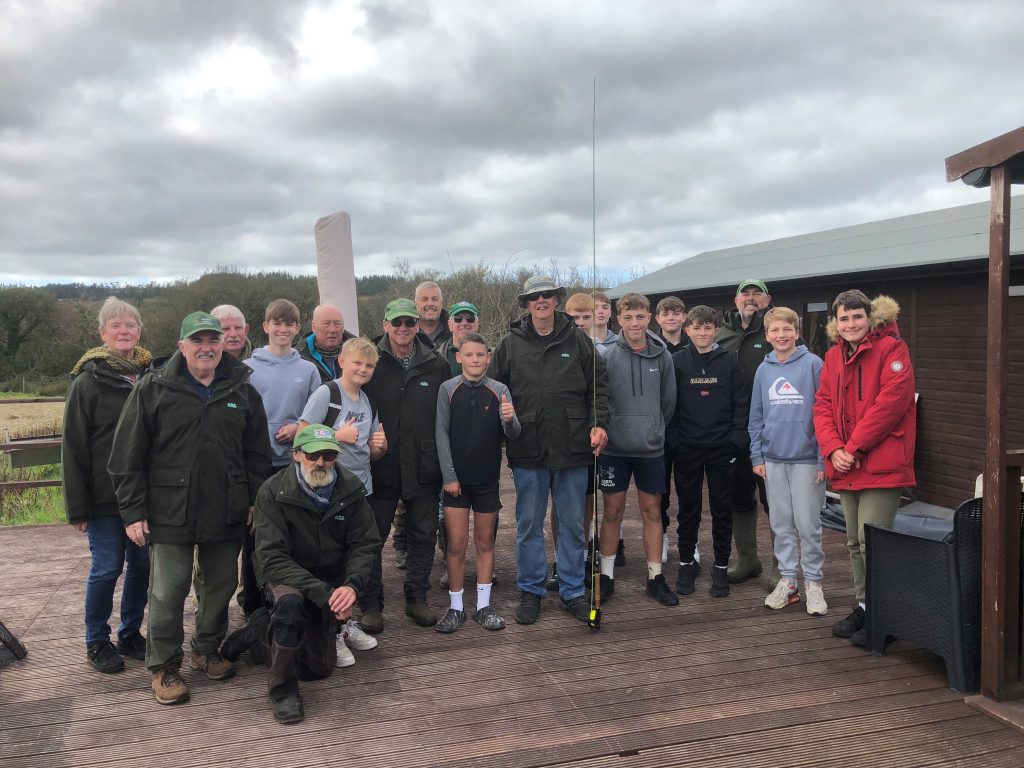HOW TO TIE THE BIG RED

The pattern is based around head and tail breathers of white polypropylene yarn. In this it has much in common with the very successful Shipman’s Buzzer. The difference is obviously in the addition of a hackle and the fact that the Big Red is usually fished totally static while the Shipman’s does work when retrieved.
What’s particularly interesting about the Big Red is the way that the hackle is applied. Rather than being wound round the hook it is instead secured around a length of polypropylene yarn so that the hackle fibres project like the spokes of a bicycle wheel on top of the hook. This is known as a parachute hackle. It’s a very efficient way of forming a dry fly hackle as all the fibres are in contact with the water’s surface. Fewer hackle turns are required to give the necessary support so a sparser, more natural effect can be created.
The Big Red is normally tied on a size 10 medium weight wet fly hook. A heavyweight hook will also work, though the extra metal will mean that the fly is more prone to sinking. What you don’t want to use is a dry fly hook. This statement might appear odd, but on lakes and reservoirs the large size – and especially the power of the fish – mean that a stronger heavier wire hook is less likely to open when pressure is applied.
HOOK: Size 10 medium weight wet fly
THREAD: Brown
BREATHERS: White poly yarn
RIB: Fine gold wire
BODY: Dyed red seal’s fur
HACKLE: Red game cock hackle
THORAX: Dyed red seal’s fur
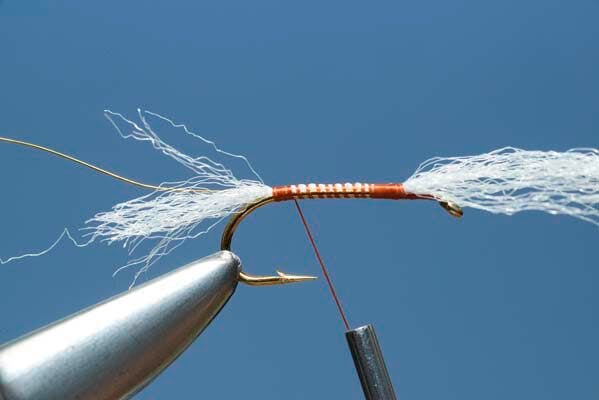
- Secure a length of white poly yarn a short distance from the eye then secure along the shank. At bend catch in a length of gold wire.
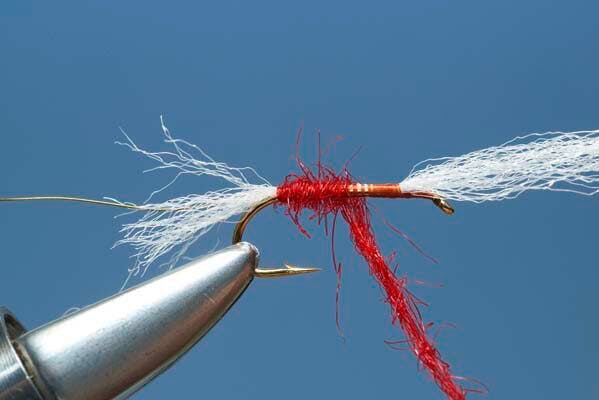
- Secure the waste end of wire along shank then dub on a pinch of red seal’s fur. Wind dubbed fur along the shank in close turns.

- Carry the fur along right up to the base of the poly yarn to form a tapered body. Apply evenly spaced turns of wire to create the rib.
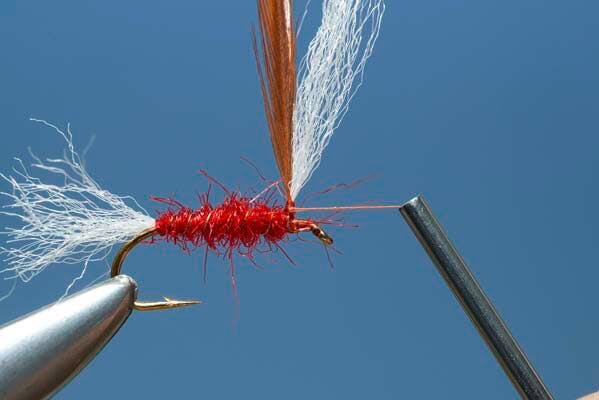
- Secure end of wire and remove the waste. Lift poly yarn into upright position and catch in a red game cock hackle at its base.
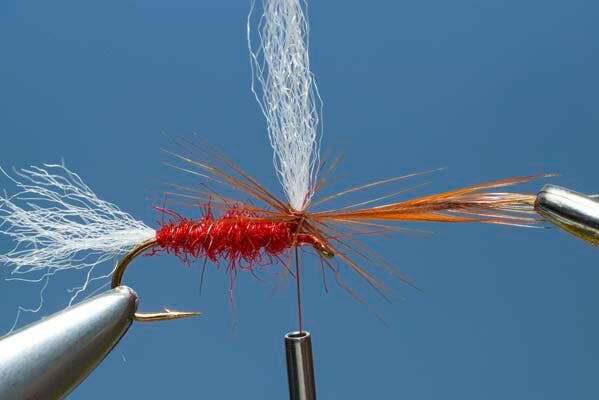
- Add close thread turns at base of poly yarn to create a small rigid section. Using hackle pliers wind hackle around wing post.

- Apply three or four turns of the hackle then stroke back the fibres and poly yarn to make room for securing hackle-tip with thread.
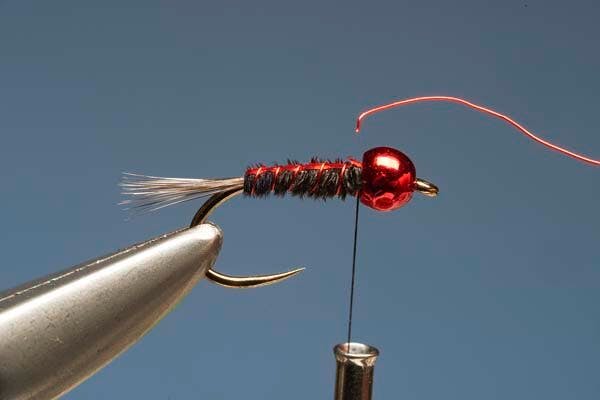
- Carefully trim off waste hackle-tip then add further locking thread turns. Dub on a pinch of red seal’s fur and wind it up to eye.
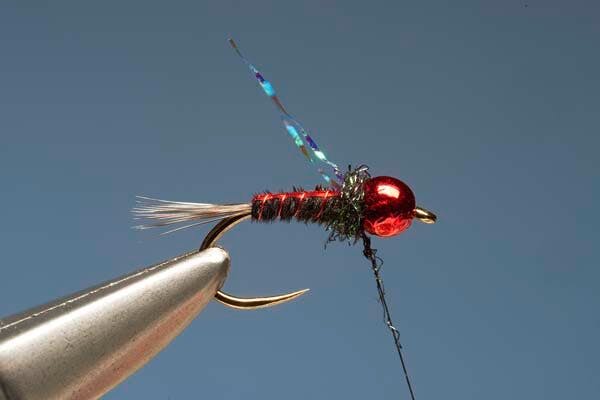
- With thorax in place push hackle turns back then draw the poly yarn over the top and secure the loose end at the eye.
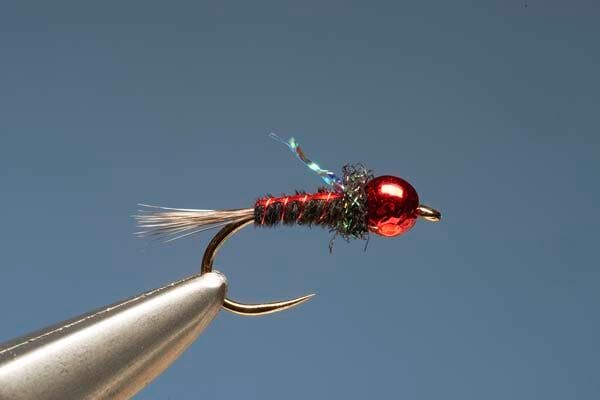
- Make two thread turns to secure the yarn then cast off with a whip finish. Finally trim yarn at either end to leave short breathers.




